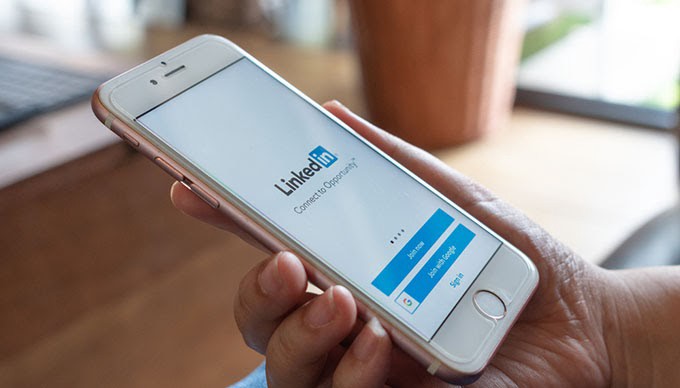As digital trends continue to change with time, so does the field of marketing. Marketing has tried in recent years to stay with the times, and many of these changes have involved companies shifting their marketing focus to the digital world. One of the most notable changes has been the introduction of performance marketing online. A catch-all approach to online advertising, performance marketing involves a transactional process between an advertiser and a marketer, where transactions are made when a marketer successfully convinces a consumer to purchase a product/service the advertiser is promoting.
A common form of performance marketing employed by companies around the globe is affiliate marketing: marketing that relies on contractual representatives and promoters. Affiliate marketing has spilled out all across the Internet, from website to website and through social media and video platforms like Twitter, Facebook, and YouTube. But marketers have been spreading their strategy to include other digital platforms — most notably LinkedIn.
Before we look into how marketing teams are introducing affiliate marketing programs to LinkedIn, let’s take a dive into what these two things are so we can understand why they work together perfectly.
What Affiliate Marketing Is
As mentioned above, affiliate marketing is a form of performance marketing — a marketing strategy that relies on paying for services rendered when customer-to-brand engagement leads to a specific action. In the case of affiliate marketing, this customer-to-brand engagement leads to a sale (conversion) which is influenced by brand representative’s (affiliate) promotional efforts.
Affiliate marketing works so well because of the involved networking to make successful campaigns work. By collaborating with other professionals, it makes it easier to reach niche audiences that might not be aware of your brand, having direct access to swaths of people who can bring newfound sales to your site.
As it stands, affiliate management software makes it easiest for marketers looking to create an affiliate strategy. Sometimes referred to as affiliate tracking software, this management software makes it easy for businesses to track the performance of their affiliate marketing strategy. When used effectively, affiliate tracking software allows companies to keep an eye on the marketing decisions they’re making, from which affiliates they’re employing to what type of affiliate content they’re creating.

The Professional Social Network: LinkedIn
While Facebook is known as the Social Network, LinkedIn can be best described as the Professional Social Network. While the site was once a hub solely for professional networking and job searching, the website has morphed into a promotional channel for businesses, freelancers, and potential employees. With hundreds of millions of users, LinkedIn has an incredible rate of engagement — one that is filled with opportunities for growth and networking.
What Makes LinkedIn Useful
LinkedIn is such a useful site for the number of amenities and features it has. As a social network, LinkedIn makes it easy to interact with other people through articles, job updates, posts, opinion articles, images, videos, and presentation slides. More important, the blogging-style features of the website make it easy to share content throughout your network, which can then be shared elsewhere with other interested and similarly minded professional folk.
For business-to-business (B2B) companies, LinkedIn is a perfect platform for marketing teams looking to employ an affiliate program, as you can readily find similar companies looking to create cohabitable and collaborative professional relationships.
Getting Your Company Started on LinkedIn
- Create a Company LinkedIn Profile
First things first. You need a company page to work with. When entering the LinkedIn platform, you need to make sure your profile is as clear as possible: clear, easy to find, and interesting. In the case of a business, this includes customizing your page so it meets brand guidelines — images, color, copy, content — while still garnering the attention of any passerby.
When crafting your LinkedIn profile, treat it like you would any other social media profile: Make sure it fits your company standards and isn’t a contrast to your website. If anything, it should look comfortably similar to your website to ensure that consumers are intrigued when referred to your website.

- Regularly Update Your Company Page
Just like you would regularly update your company’s Twitter or Facebook page, you want to ensure that you’re regularly producing content for your LinkedIn profile. This is one of the easiest ways to keep bringing people back to your brand, keeping them interested in what it is you have to say, what products you have in the pipelines, and what past work you’re proud to share.
Think of this as a message board to inform your followers and network about brand developments. And consider taking the time to interact with other users on the platform to keep your profile interactive. You’ll never know of the opportunities to come out of interacting with some other profiles.
- Get Your Employees Using the Platform
If you’re looking to really boost the value of your LinkedIn platform, you should consider getting some of your employees in on the LinkedIn game. With their own personal profiles, they can engage with your content and share it with their own network.
Your employees are your company’s biggest advocates, so it’s in your best interest to leverage their networks to expand your own. Whether they share your posts or simply list your company on their profile, it can bring attention to your LinkedIn page, making it easier for others to find you along the way.

Leveraging LinkedIn as a Marketing Tool
Once you have your company page has been established, it’s time to move on to the next phase in the process: understanding how you can maximize the benefits of LinkedIn for your company. While you can simply go about liking every post you see and connecting with every person who looks at your company page, it’s not going to lead to any results. Rather, you should be taking the time to create a plan that can be implemented throughout your LinkedIn profile — an affiliate marketing strategy to make the most out of everything available to you.
So, how do you go about creating a plan? While LinkedIn can support your business in numerous ways, you’ll want to understand what it is you want to achieve in the first place. Are you trying to establish your brand as an expert in your industry or are you interested in increasing the size of your network to improve the likelihood of performance marketing tactics?
Whatever it is you want, it helps to start with the basics: understanding who it is you’re targeting, what it is you want to digitally produce, and more. Particularly, there should be an end goal in mind — a target you hope to attain as time pays off.
Setting goals for yourself can truly pay off, too, as it will give you benchmarks that can be measured as time goes on. For a performance marketing campaign, such benchmarks can be tested with affiliate tracking software, making it simple to determine where you’re connecting and which businesses you want to recruit for marketing purposes. And, if by this point, you still haven’t identified your audience and the people you hope to target, there is no more waiting. A set target means nothing if you don’t know who you’re talking to, so it’s imperative that you understand who your affiliate marketing strategy is intended for.
Your Company’s LinkedIn Audience
Who follows your LinkedIn page? To whom do you currently market your products and services? Is there a particular audience whose attention you aim to garner with each quarter? This information is necessary before you can even begin to think about implementing a performance marketing program. Moreover, your affiliate management software will be of no use if you’re not marketing to the right people — your engagement and conversion rates are bound to be incredibly low.
If you understand your company’s niche — its spot within the market that allows it to stand out from the competition — you can identify where your attention will be guided when crafting your affiliate marketing strategy for LinkedIn. Understanding your audience makes it easier to go ahead when laying the groundwork for your affiliate strategy, as you have an idea of what content should sound like, what your usual audience member looks like, and what it is they want to hear along the way. Rather than setting your goals and forcing yourself to reach them, make the process easier by identifying the people you’d like to reach and just go to them.

Affiliate Marketing Strategies on LinkedIn
- Highlighting B2B Services
One of the best ways to get the attention of other profiles throughout LinkedIn is to share your B2B services. Whether it’s a case study or an informational blog describing a B2B service your company provides, you can garner the attention of fellow companies that may be interested in working with you.

- Don’t Openly Promote
Subtlety is the friend of most marketers. Great marketing comes from interesting, engaging campaigns, so you shouldn’t come straight out and attempt to force a product or service onto a business.
- Expanding Your Company’s Network
One of the best things you can do when expanding your affiliate network throughout LinkedIn is to increase the reach of your company’s digital work. With a greater network, affiliate marketers can not only connect with and generate potential leads from across the site but also increase brand awareness while also recruiting like-minded professionals.
- Look for Fellow Companies Advertising
Other companies are sure to be advertising across LinkedIn, whether with sponsored posts or with clickable banners located on the sidebar or footer of the website. If you find a business that looks similar to your own, consider giving their advertisements and LinkedIn profile a glance. They might also be interested in sponsoring events and content from fellow companies.

LinkedIn Groups
Professional groups are a great place to meet similar professionals hoping to expand their craft. Within LinkedIn Groups, you can post enticing content to grab the attention of fellow professionals, getting them interested enough in your company to give your company’s website a look.
- Treating LinkedIn Like a Professional Blog
Stay in touch with other businesses and professionals by sharing your insights, work, and interests. Regular content creation can keep you engaged with people across the platform, reminding them of your business, what you stand for, and what you offer to the marketplace.
- Message People You Want to Make a Connection With
Have you found a business with interests and goals that align with your own? Consider reaching out to them, letting them know what caught your attention. Not only will it help them out by identifying what’s working for their profile, but it can lead to a worthwhile professional relationship that can become collaborative, where your businesses work to promote one another across the platform.

- Share What You Do
The best thing you can do to entice fellow professionals and companies to look further into your company is to provide them with regular updates of your work. Whether it’s a blog, a written case study, or a videographed testimonial, you can keep your network up to date on what your company is accomplishing, producing, and striving for. Not only will it garner interest from fellow professionals completing similar work, but it can increase your company’s chances of being discovered by another useful business.
Network for the Win
Crafting an affiliate marketing strategy for LinkedIn takes some time, but it all comes down to networking. If you can successfully grasp the attention of a fellow business, you can capture a partner who can eventually promote your business in the future. And, with the right affiliate management software, you can track your progress over time, fine-tuning your content and relationships to effectively generate brand-to-brand engagement.



